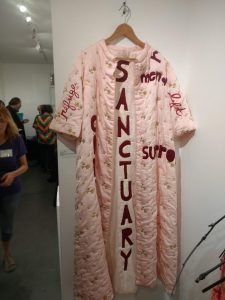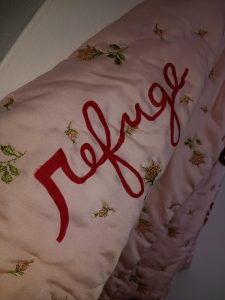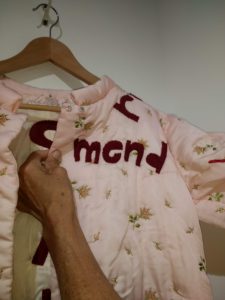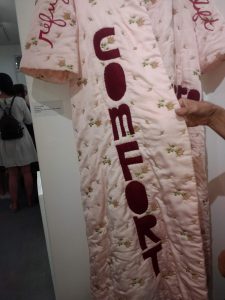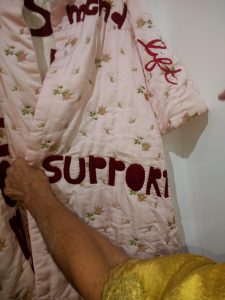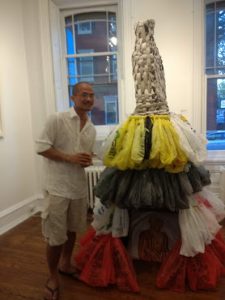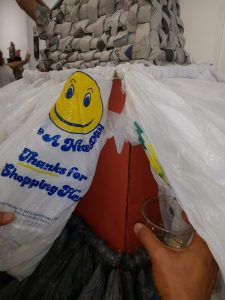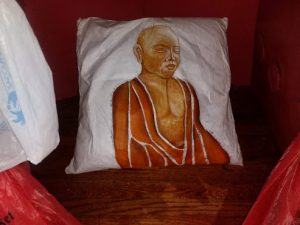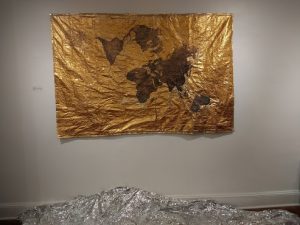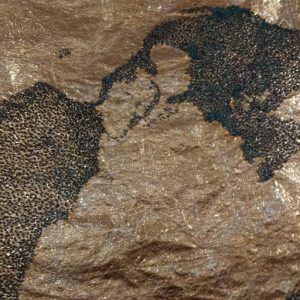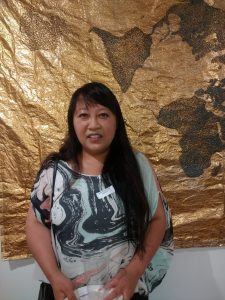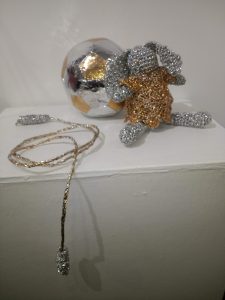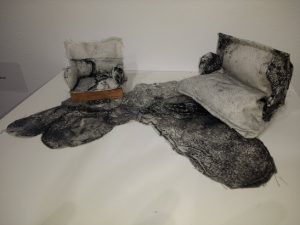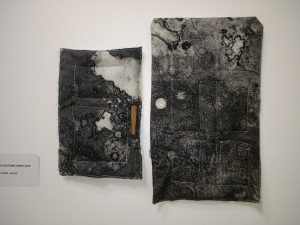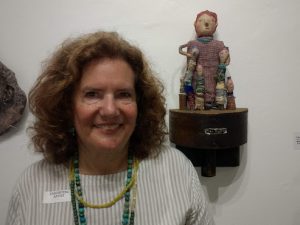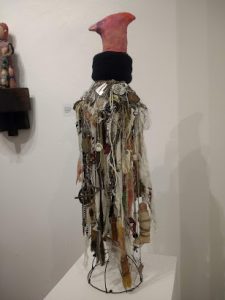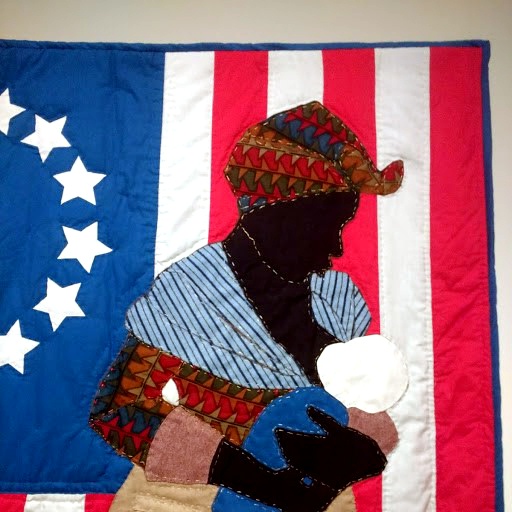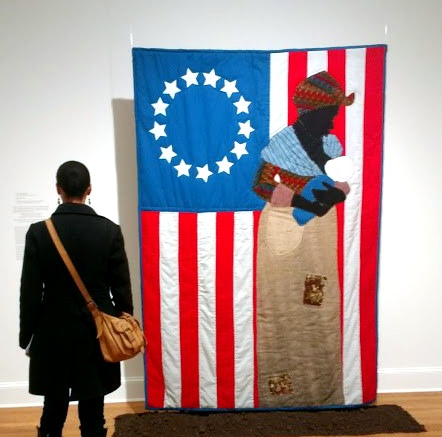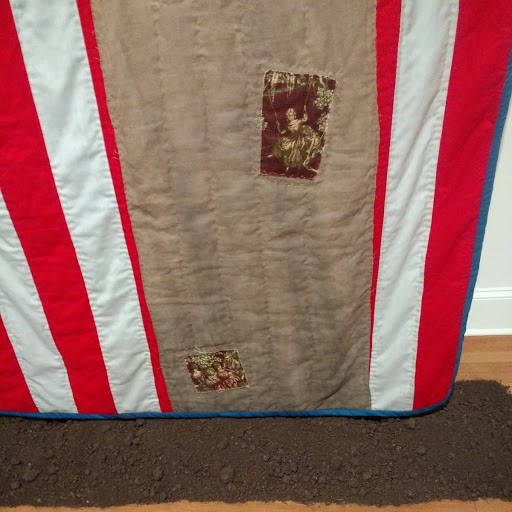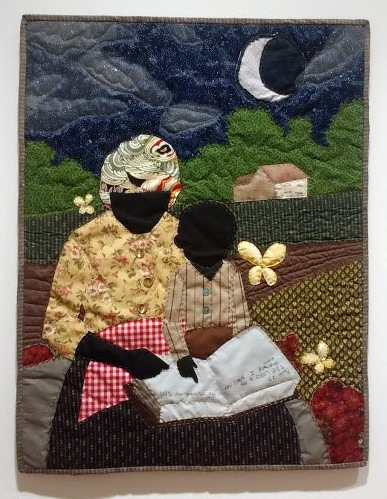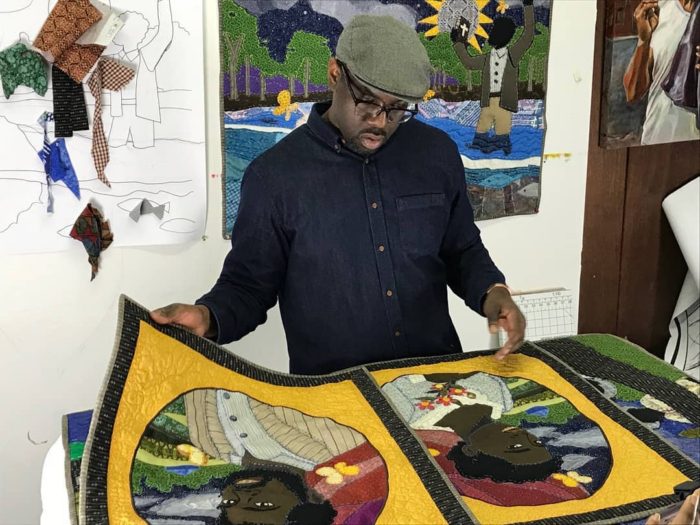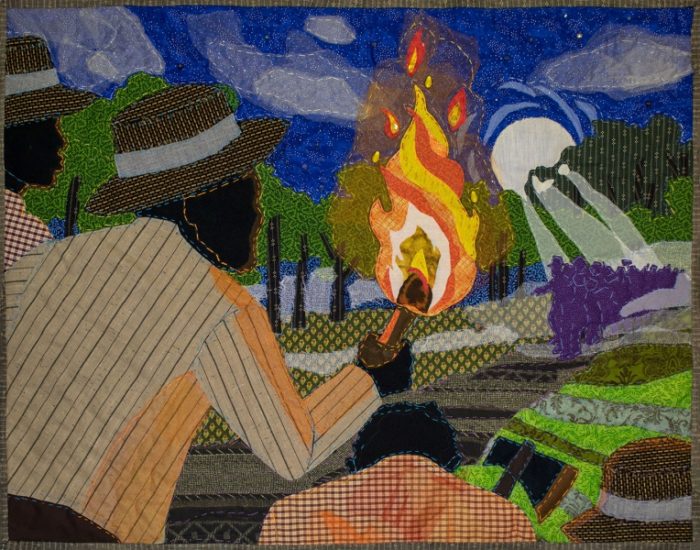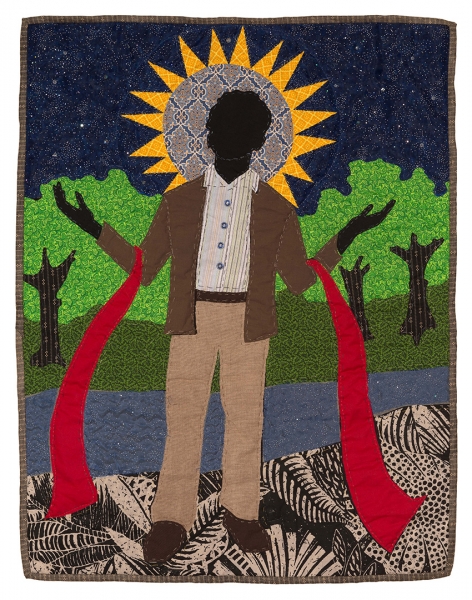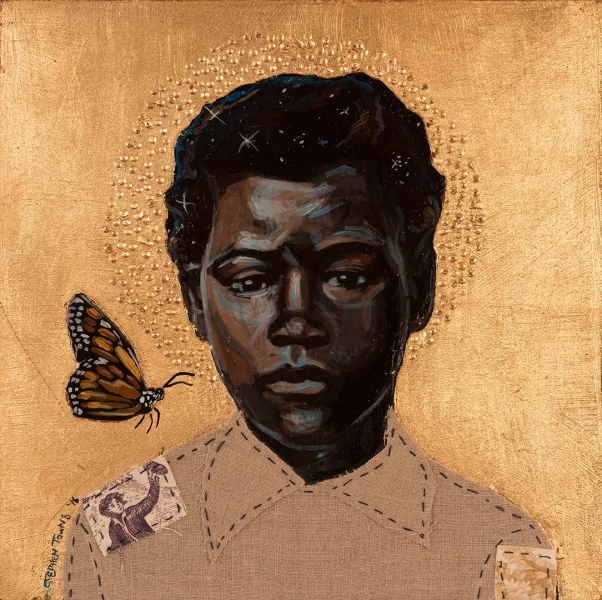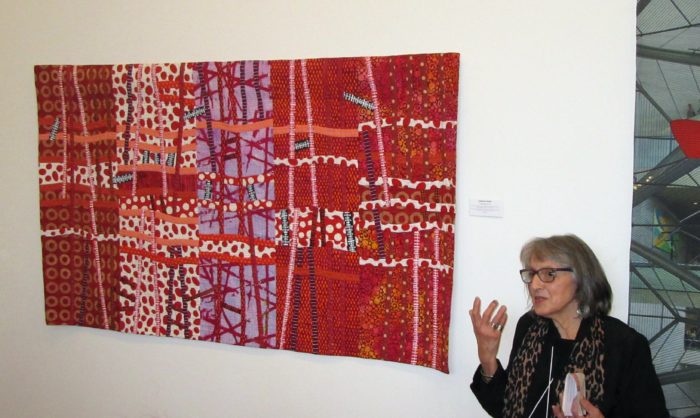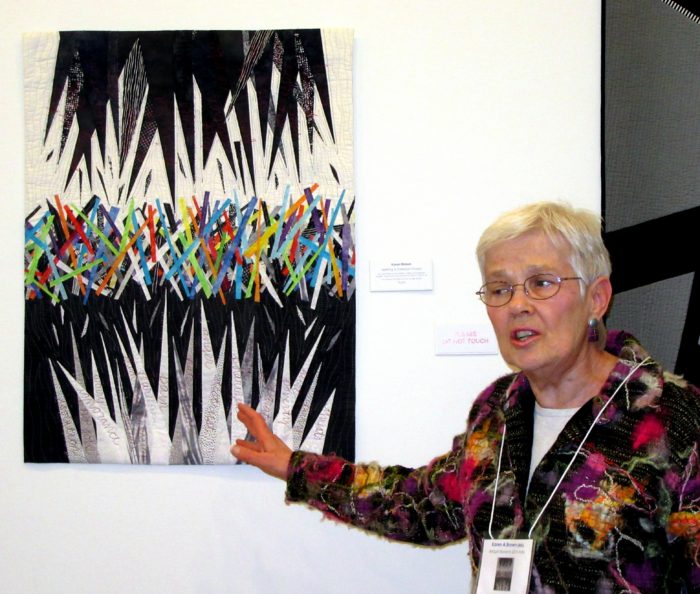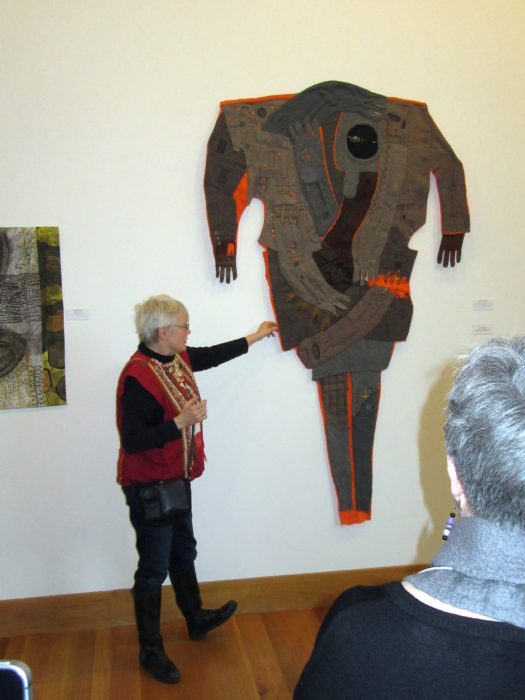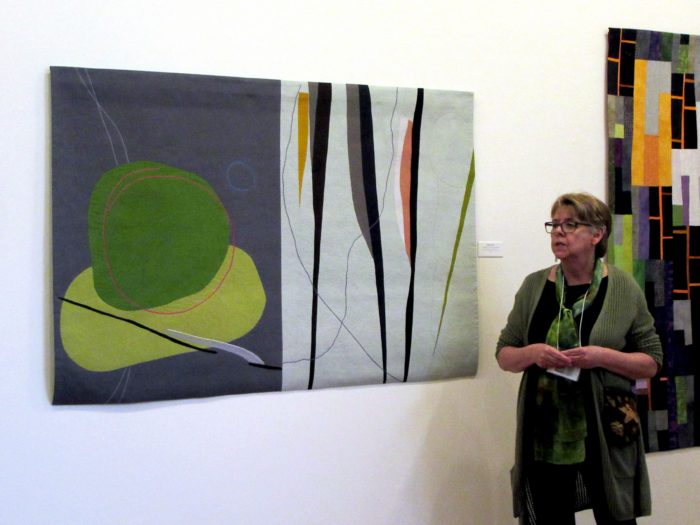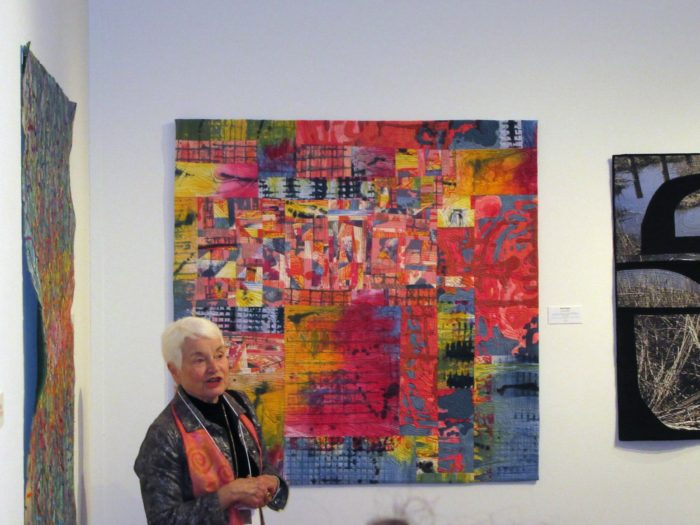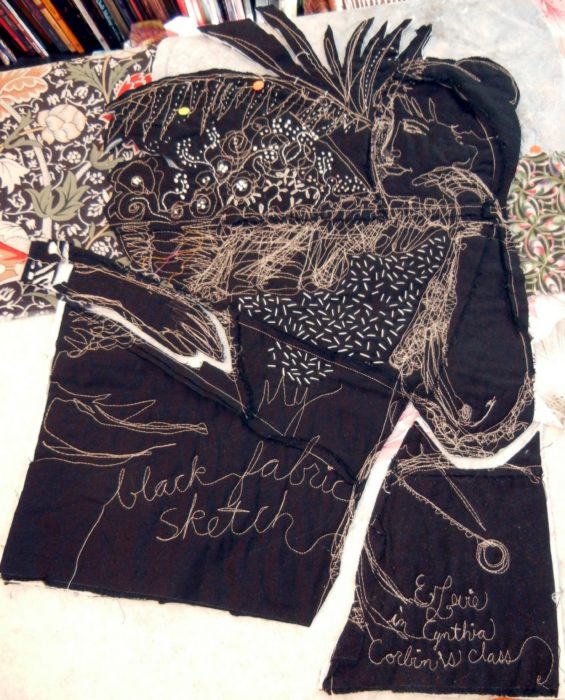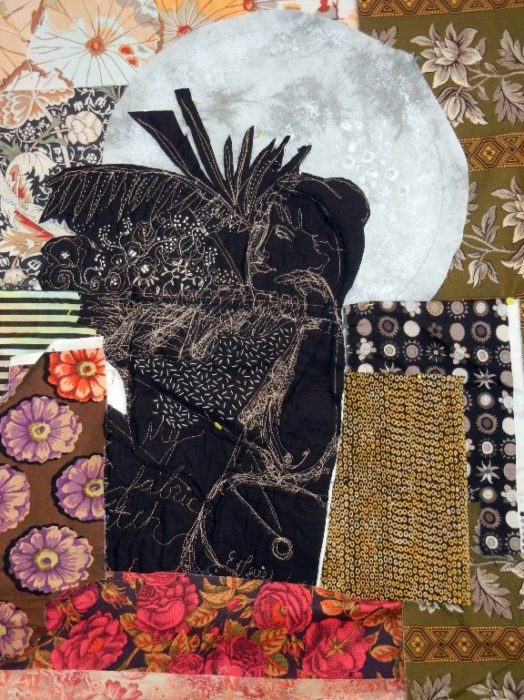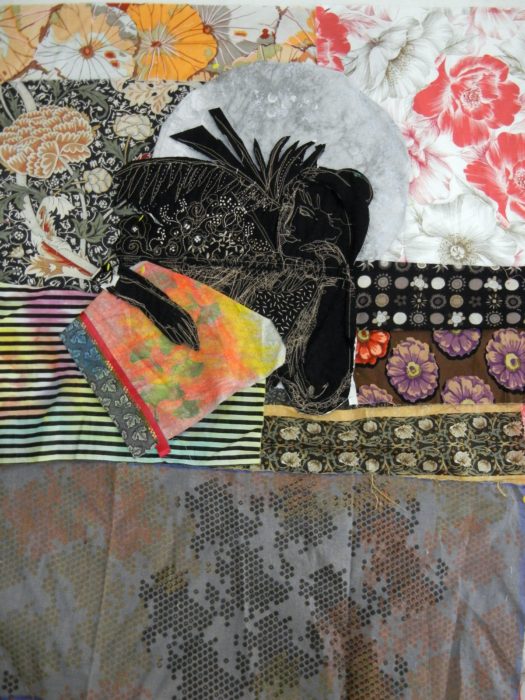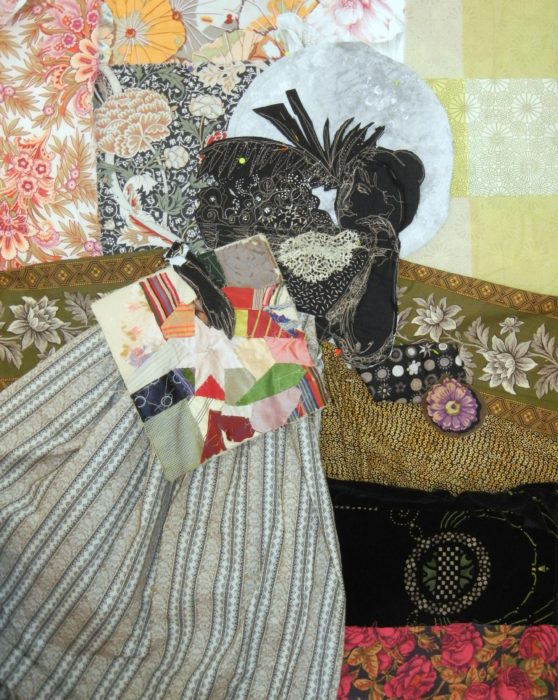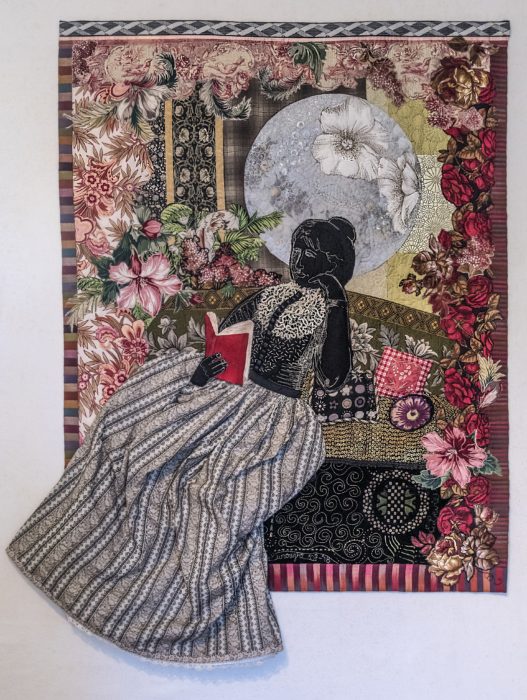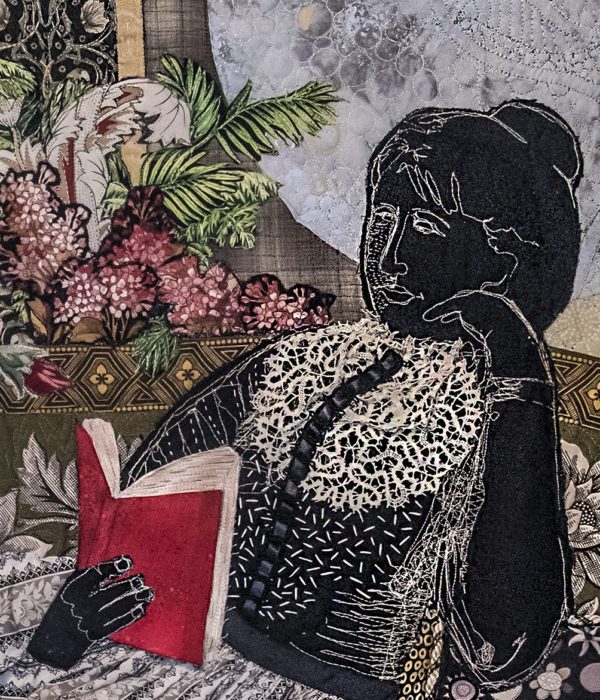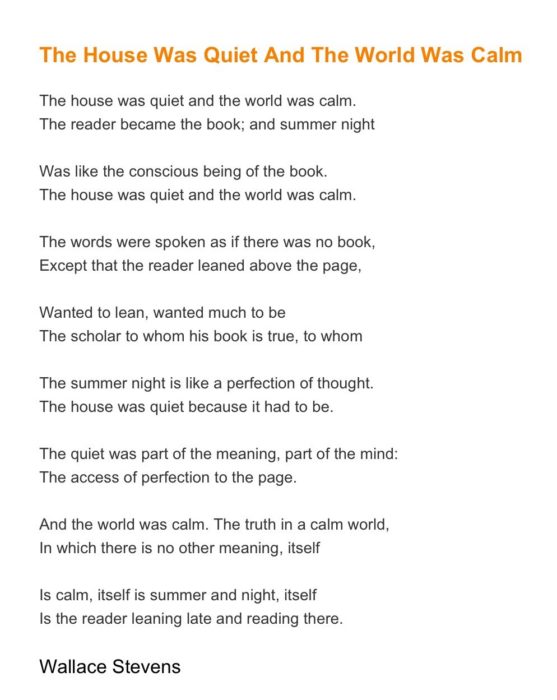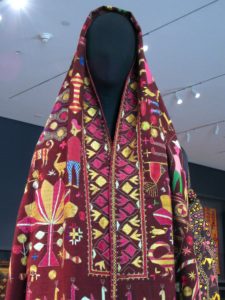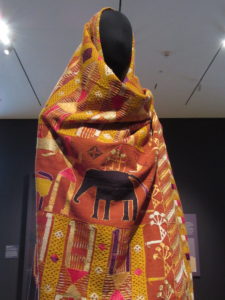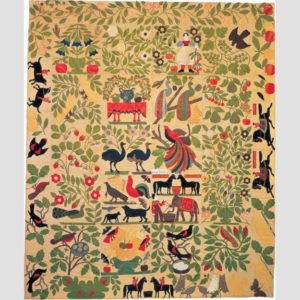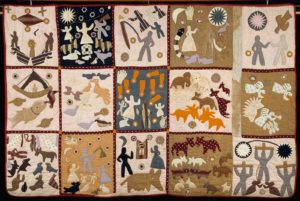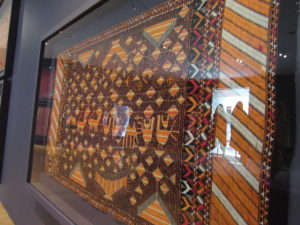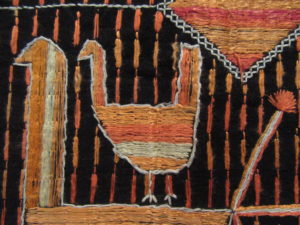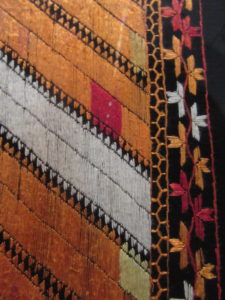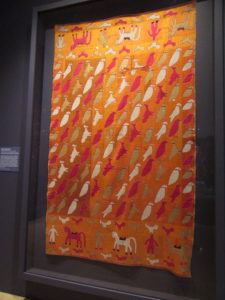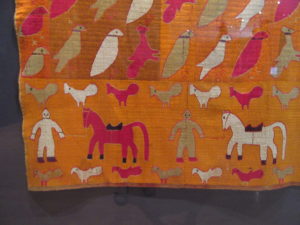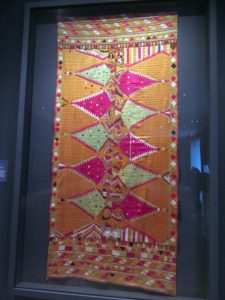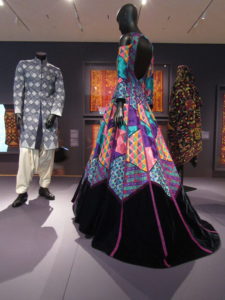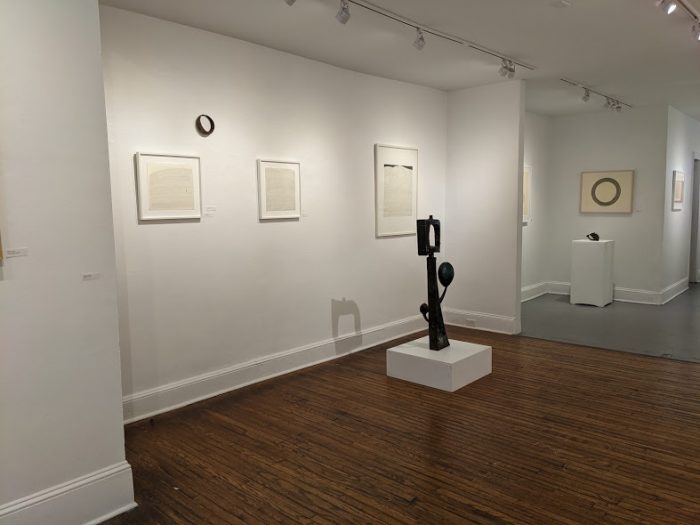
No, not quilts this time. But I just have to share the sublime work of Cheryl Levin which I caught on the last day of her exhibition at Da Vinci Art Alliance on Valentine’s Day.
Here’s the description on DVAA’s website: “Forms for a Continued Life is an exhibition of ink drawings by Cheryl Levin shown alongside sculptures and fragments by her late husband, metal worker Robert Phillips (1962-2012), and their son, Electrical Engineer and Generative Artist Aidan Phillips. This visual art exhibition contrasts weight and form to investigate impermanence, collective grief, and emergence of life from loss.”
Heavy, right? I met Cheryl a few years ago, when she worked alongside her friend DaVid Harari to paint our balconies. DaVid is a highly skilled housepainter; the tall, dark, and handsome Israeli has a flip side: musician and music lover. Cheryl is a warm and gracious, humble, petite and pretty woman who sometimes joins DaVid for some house-painting jobs, and offers custom faux finishes and murals to clients. And, she’s a highly conceptual contemporary artist. I’m dazzled by her backstory of partnering with her late husband in creating big works of public art and the ways she evokes very quiet, private emotions in the work of this exhibit. Learn more about her many dimensions — including her very colorful paintings — on her website: http://www.cheryllevin.org
I’m posting to share my own reaction to this exhibit of tightly curated works. And since this is my quilting blog, I’ll take the privilege of citing the elements I savored which echo the ones that get me jazzed about art quilts:
1–Fine lines (like dense, hand-driven machine quilting)
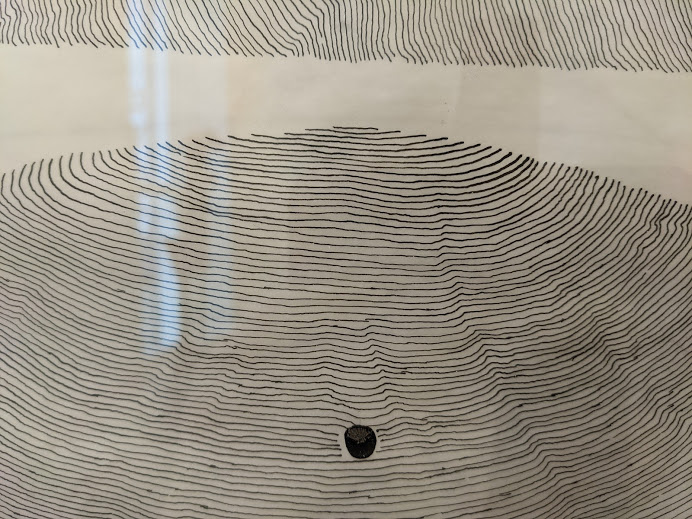
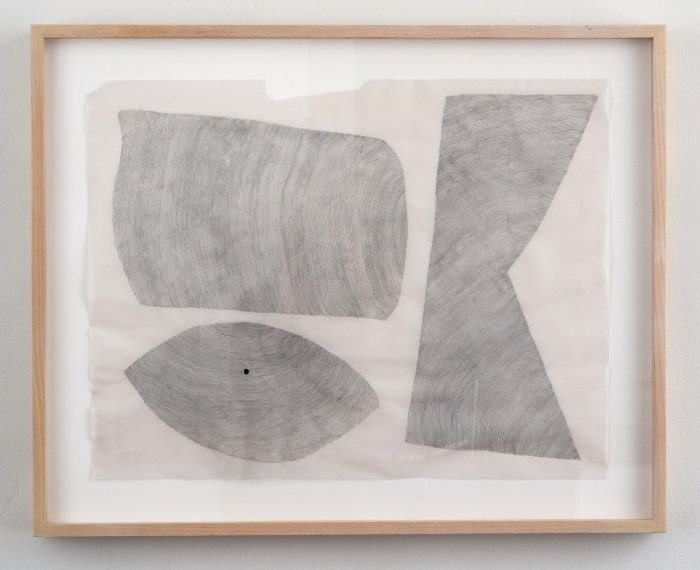
2–Contrast of delicacy and strength (In contemporary quilts, I’m talking about pinstripe stitching paired with monumental shapes and dimensions.) Oooh, those fine lines hand-inked with a pen in rhythmic repetition vs. the weight of the substantial, seemingly solid forms they fill. And, of course, the absolutely huge contrast of her meditative drawing with the often craggy and robust steel sculptures of her late husband.
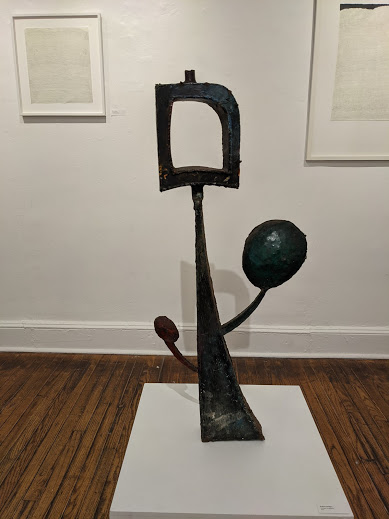
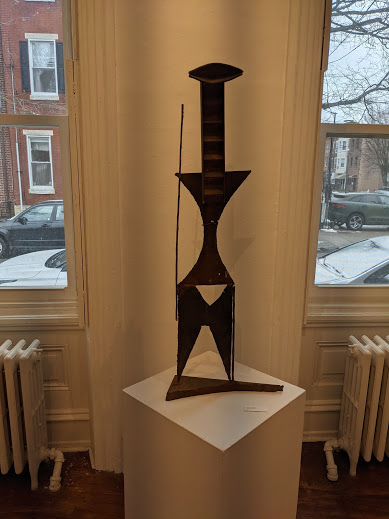
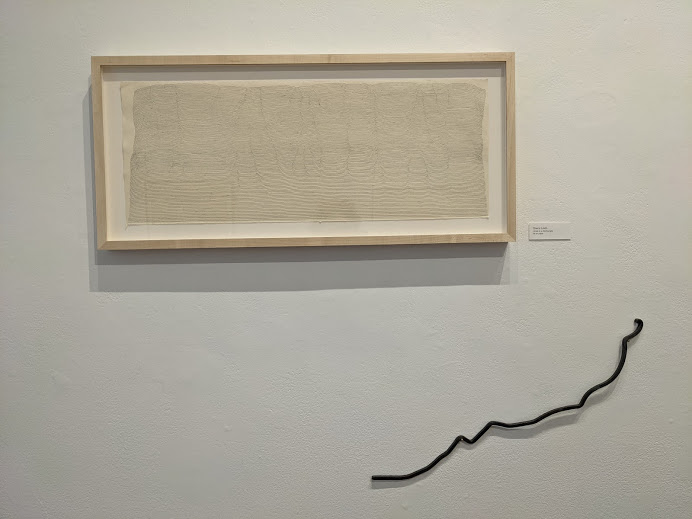
3–How being at the exhibit in real life allowed me to interact with it: Moving through the spaces. Seeing how the light hit at different angles. Avoiding the inevitable glare from the glass but occasionally tickled by how spots of track-light reflections occupied the margins. Unknowingly casting my shadow on it, and thereby becoming a part of the art. (OK, that was presumptuous and vain of me).
How fortunate I am to be a member of Da Vinci Art Alliance, which allows me to visit during Covid closures elsewhere — albeit by appointment, masked, with only the executive director of DVAA and my husband present. Kudos to all the people and places that allow us to interact with art and artists in the only ways possible during the pandemic. I’m surfing the net, Zooming with other artists, watching lots of different PowerPoint presentations.
But aren’t we all starving to visit museums and galleries IRL–in real life, to be alongside teachers and students in art classes, workshops, and live crit sessions? There’s just nothing like seeing art — and art quilts — up close and personal. There’s nothing as great as getting together in person, unmasked, with the talented makers, critics, and art lovers to share our stories and perspectives as well as what we make.
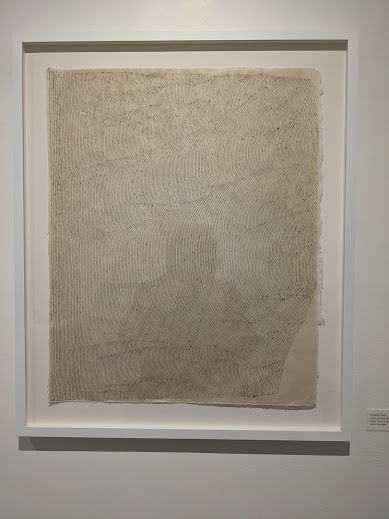


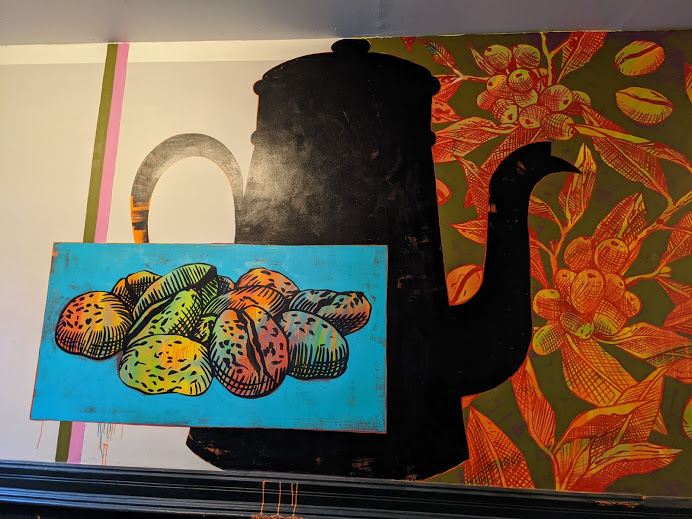
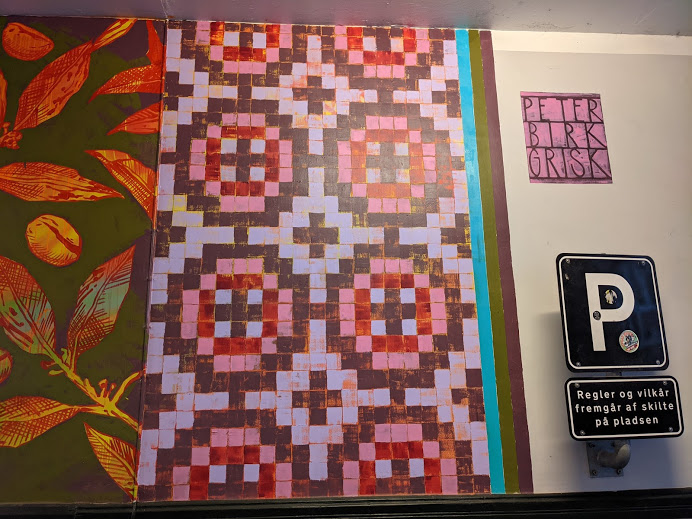
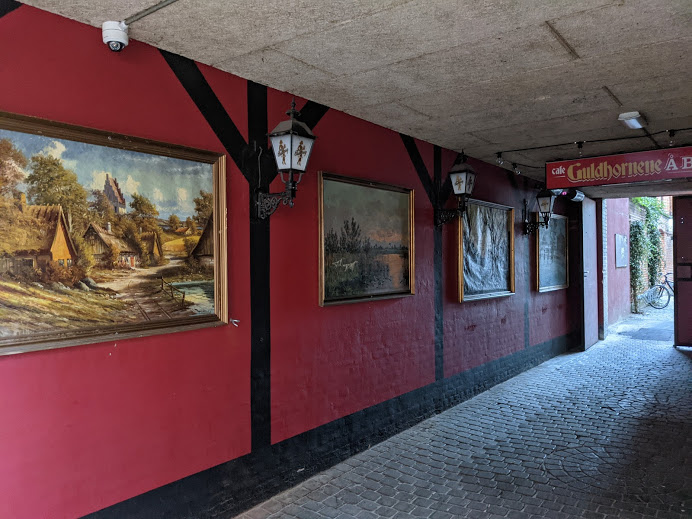
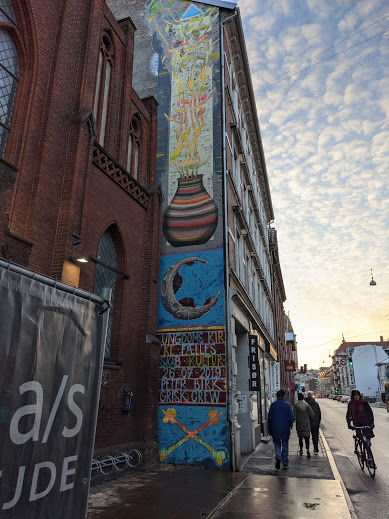
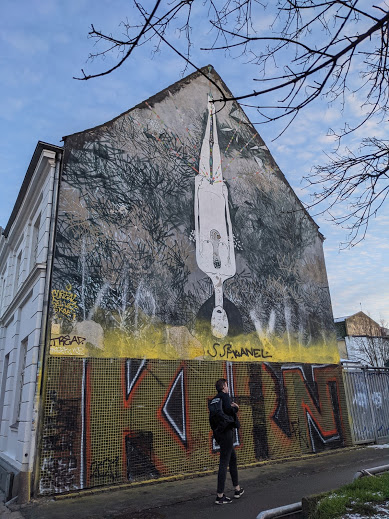
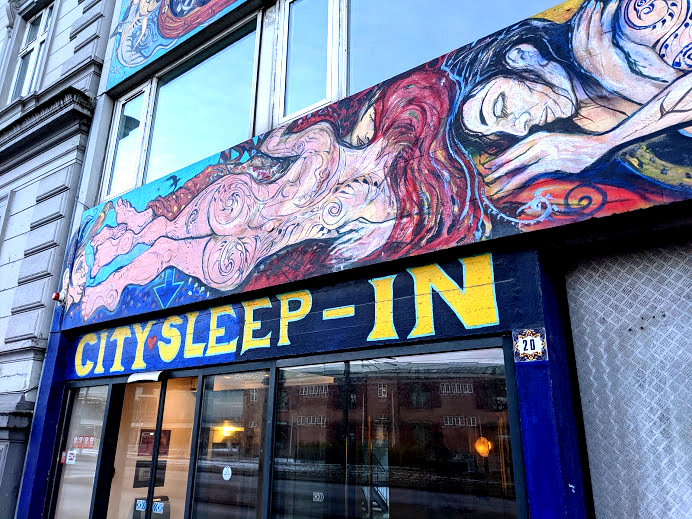
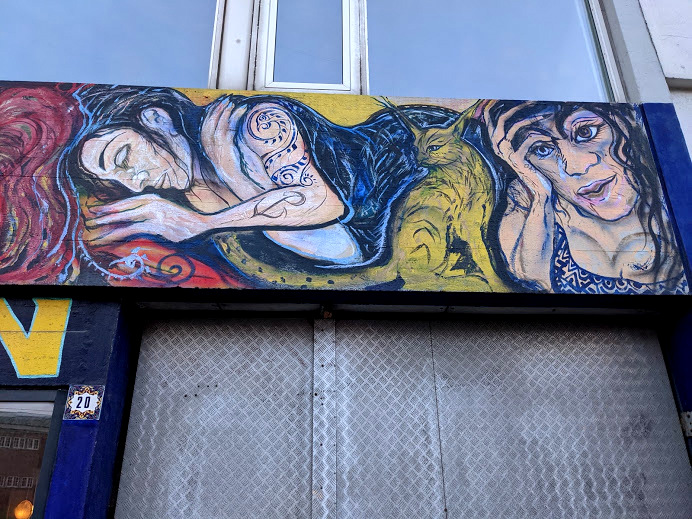
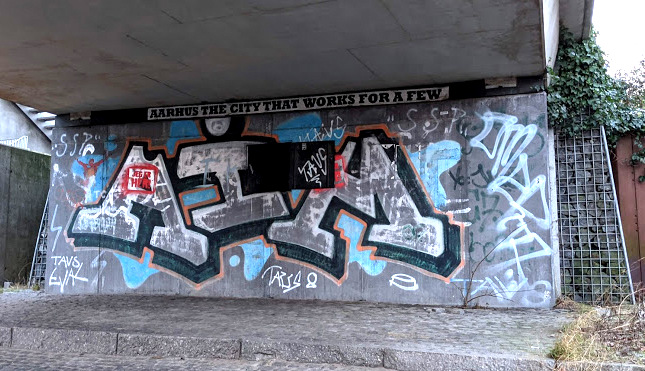
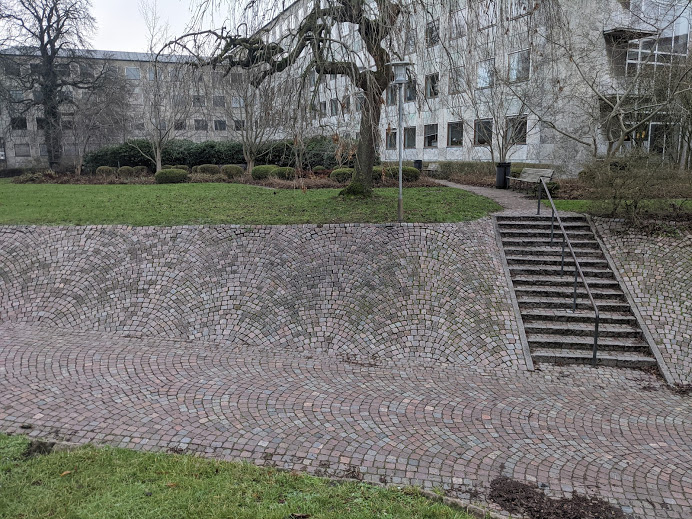
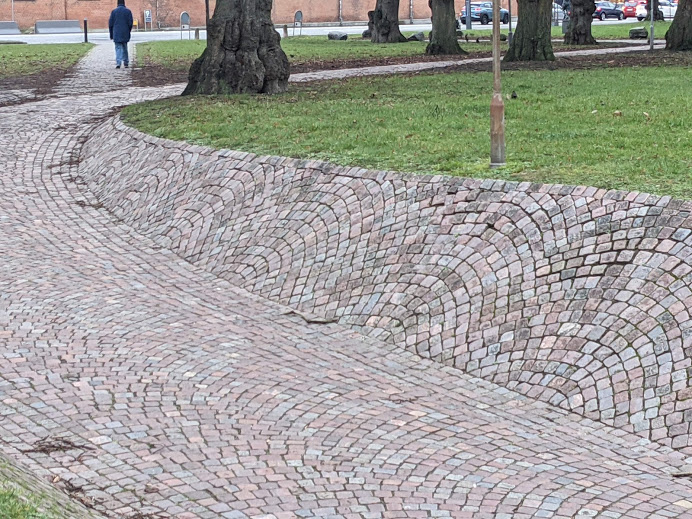
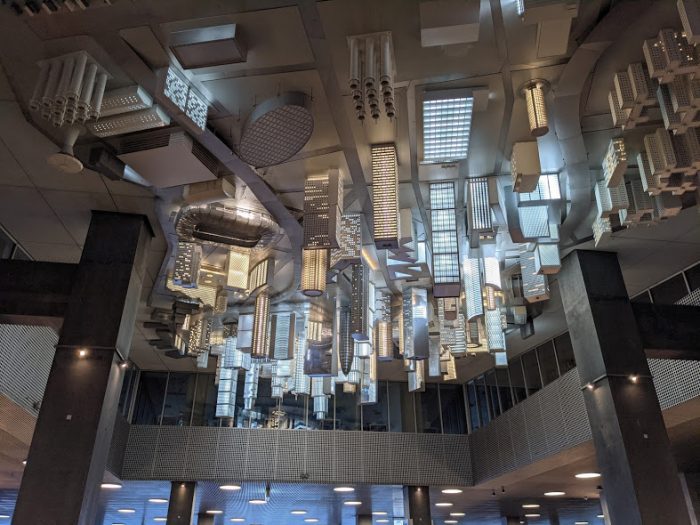
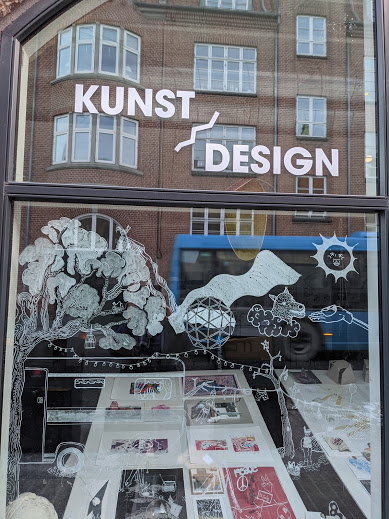
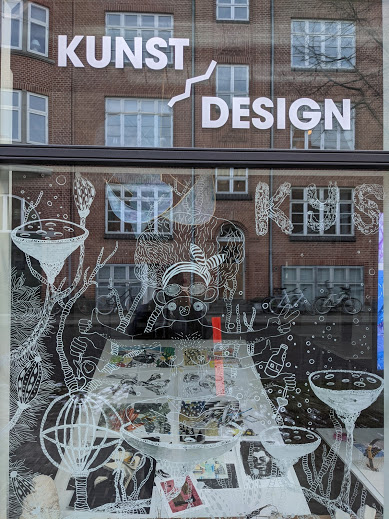
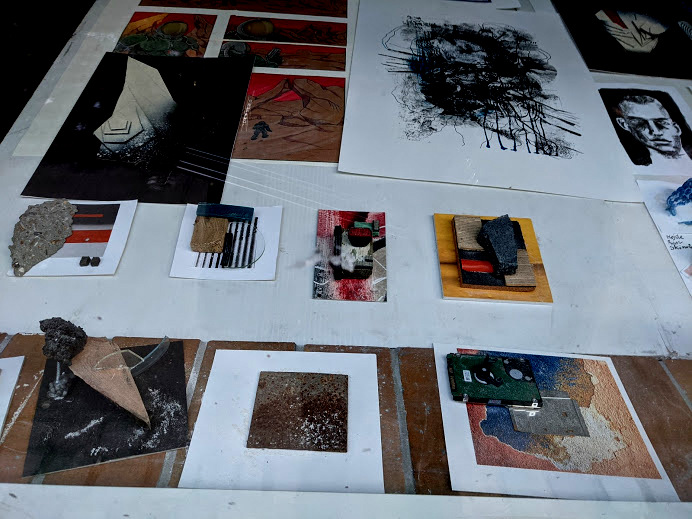
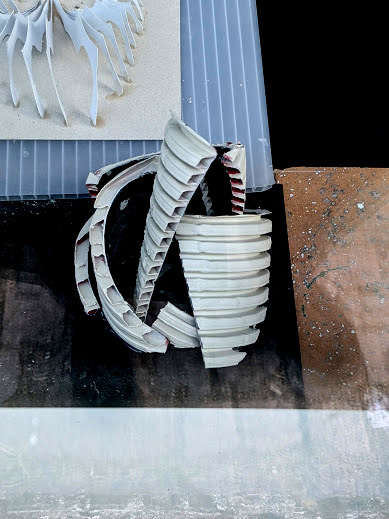
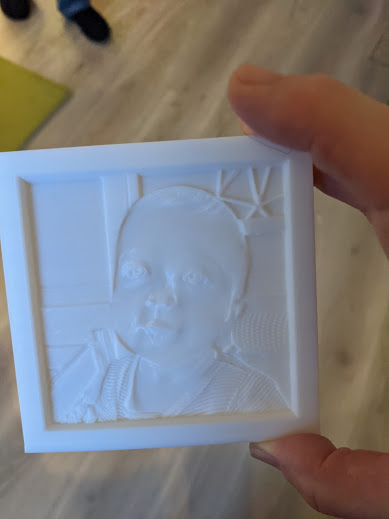
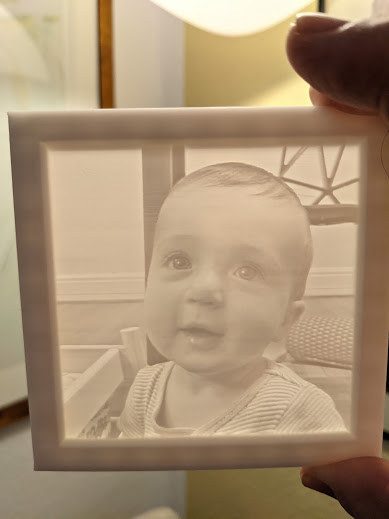
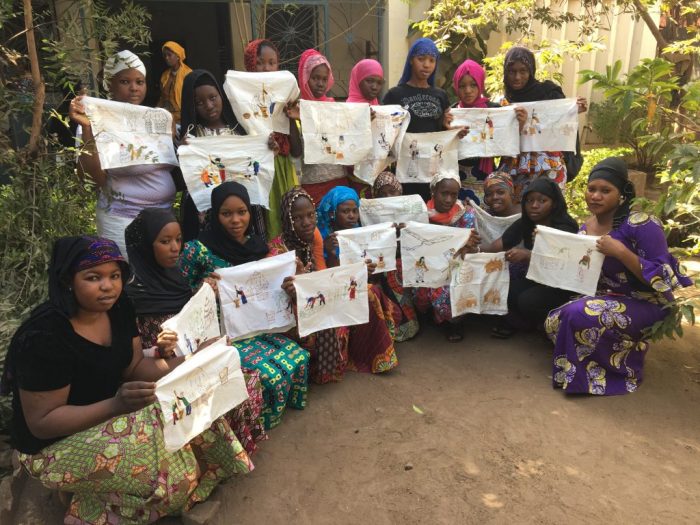
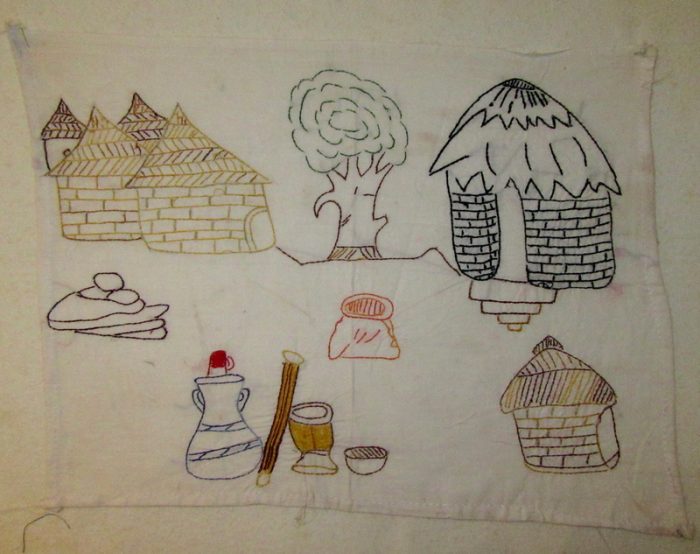
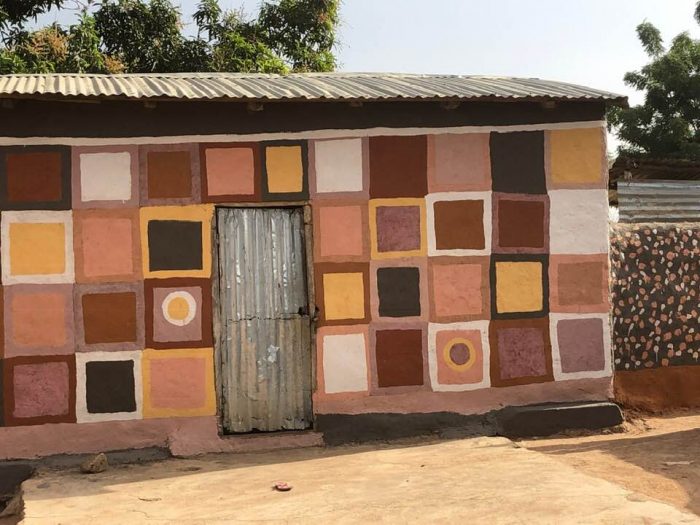
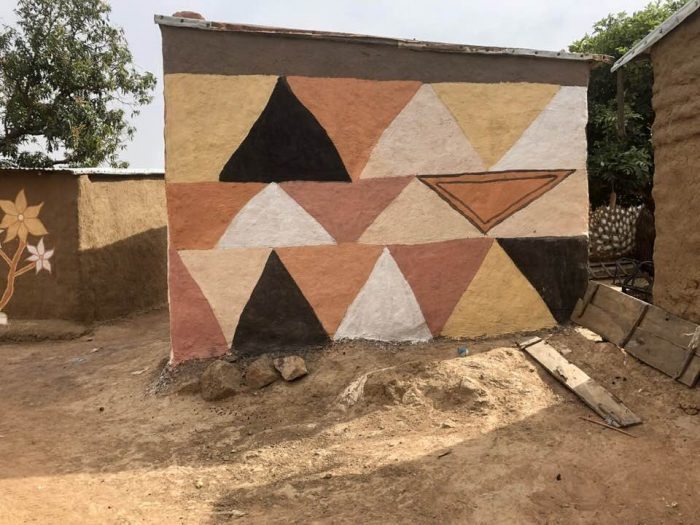
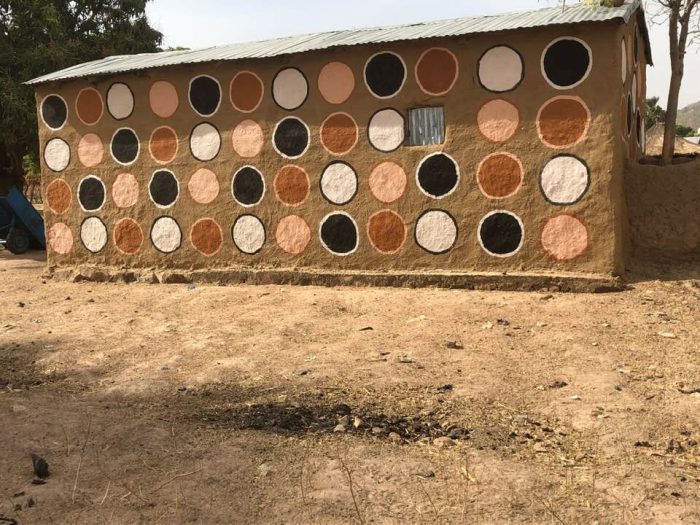
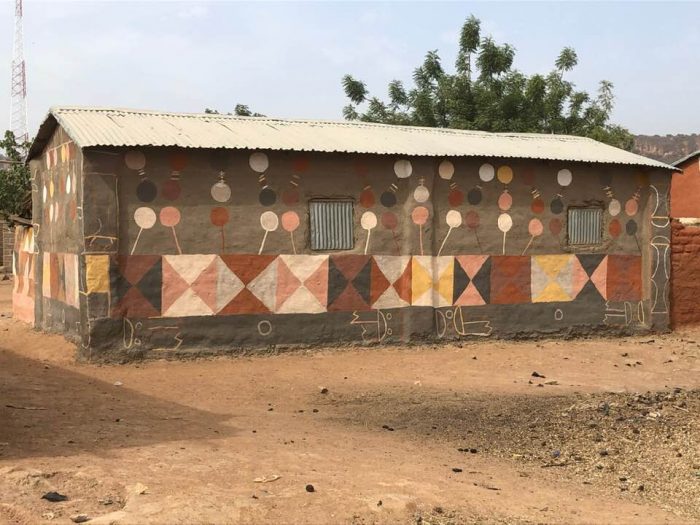
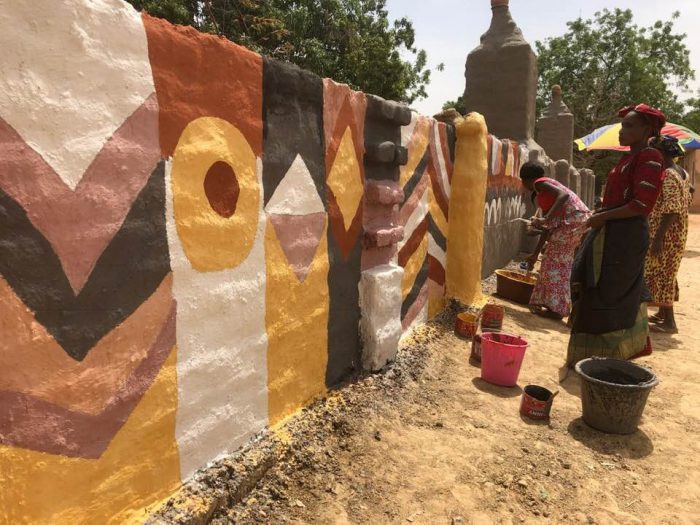
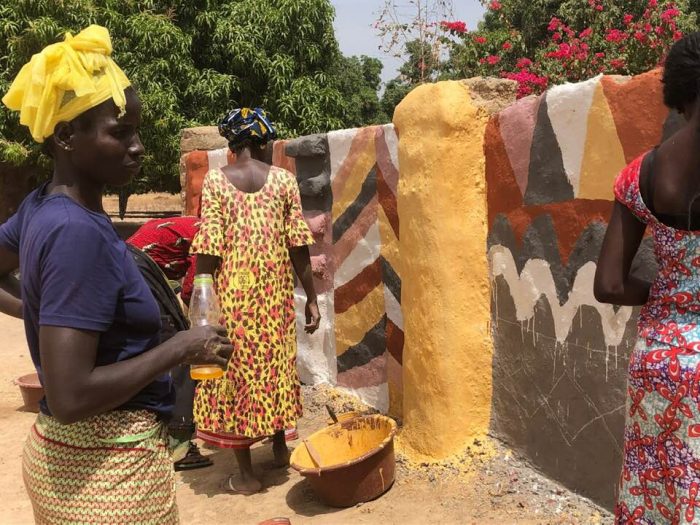
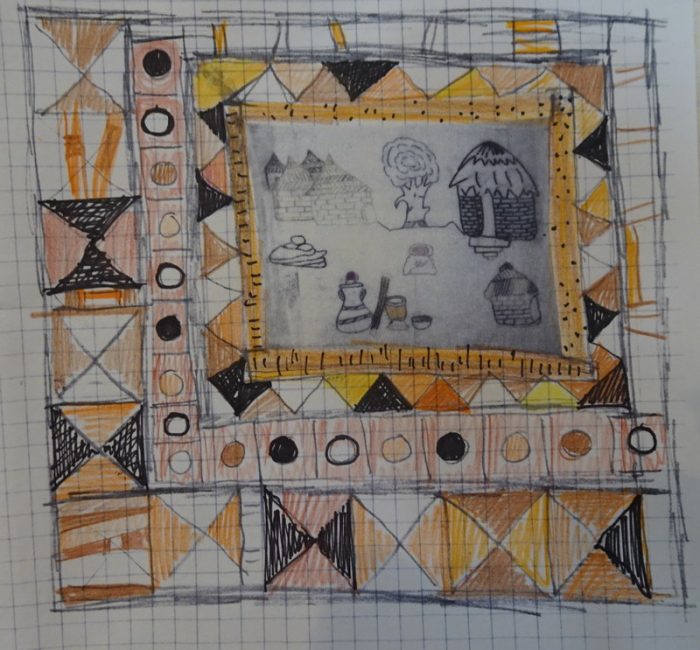
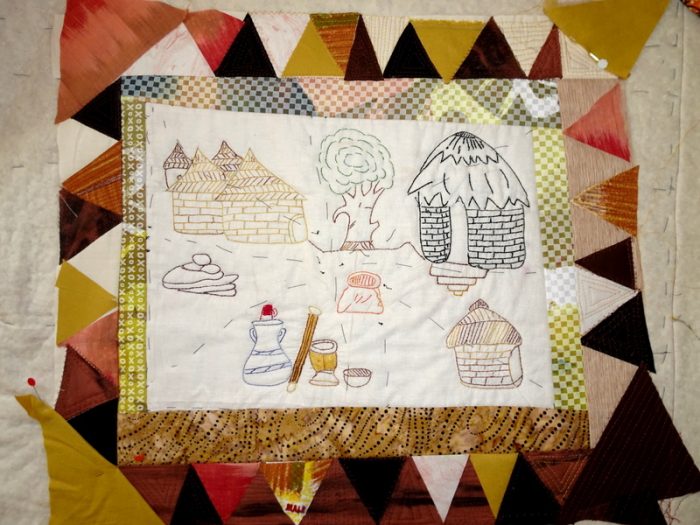
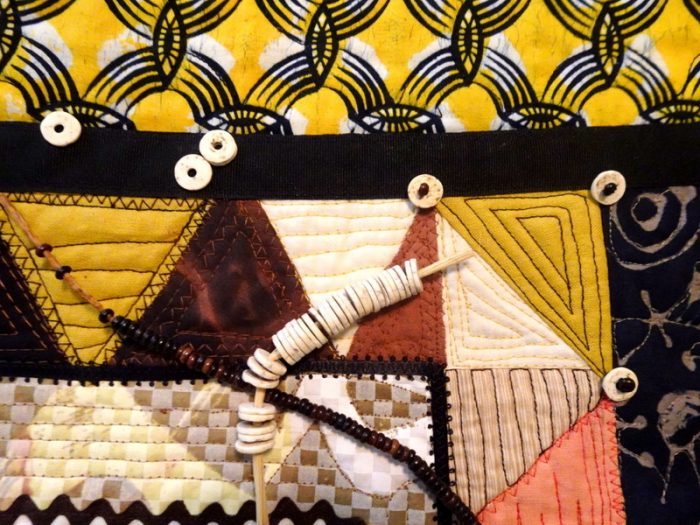
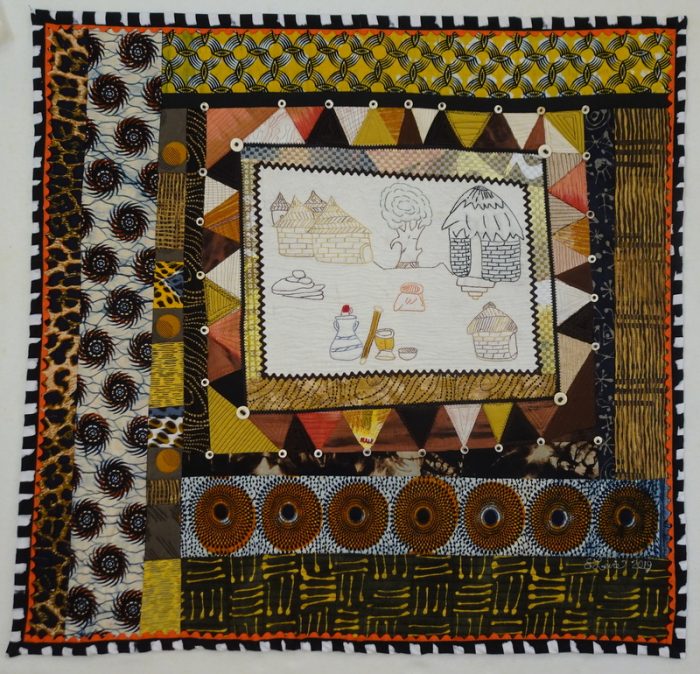
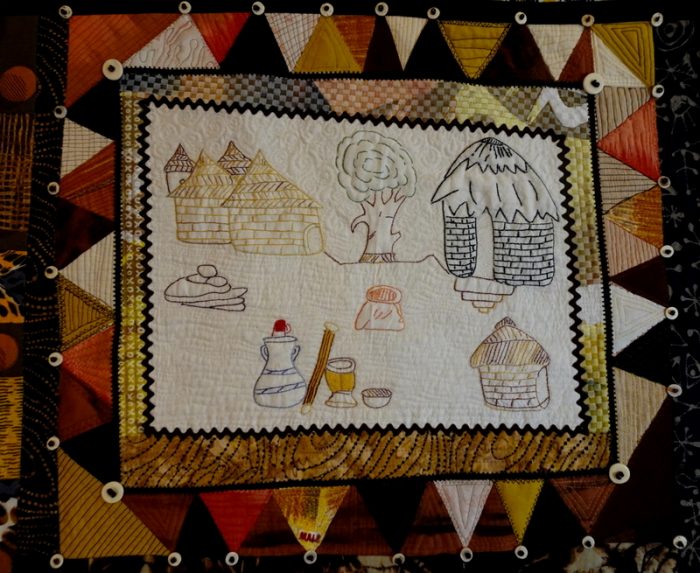
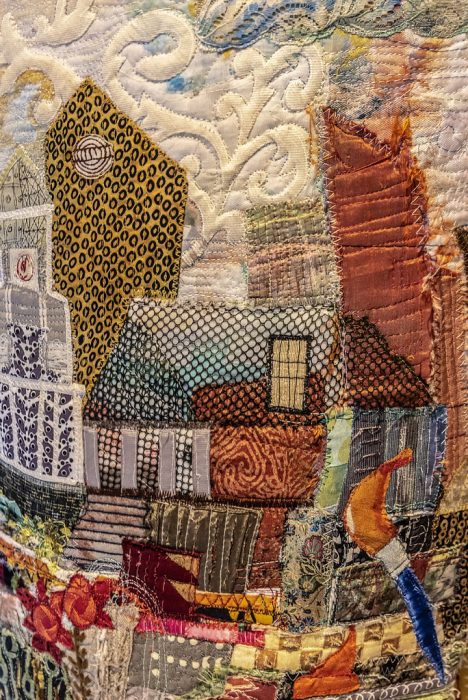
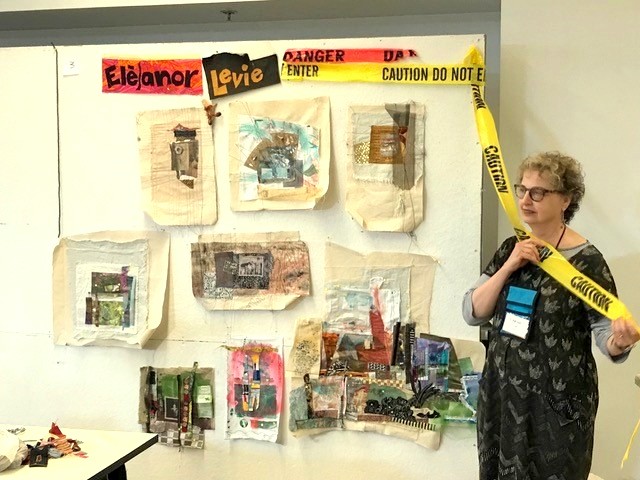

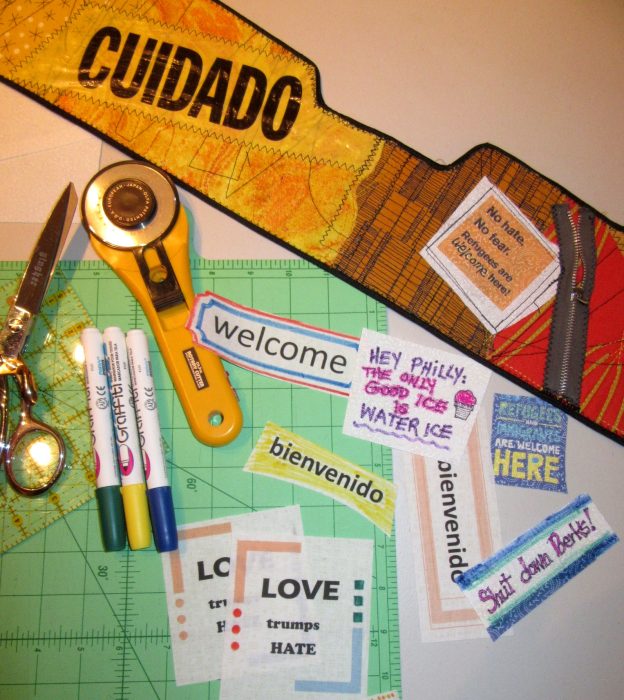
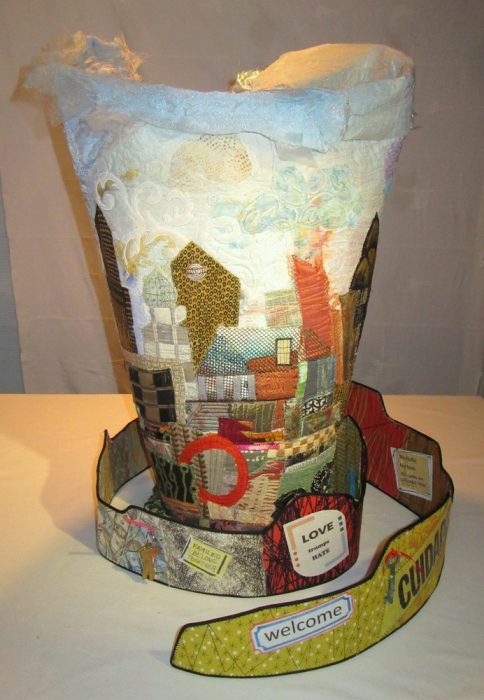
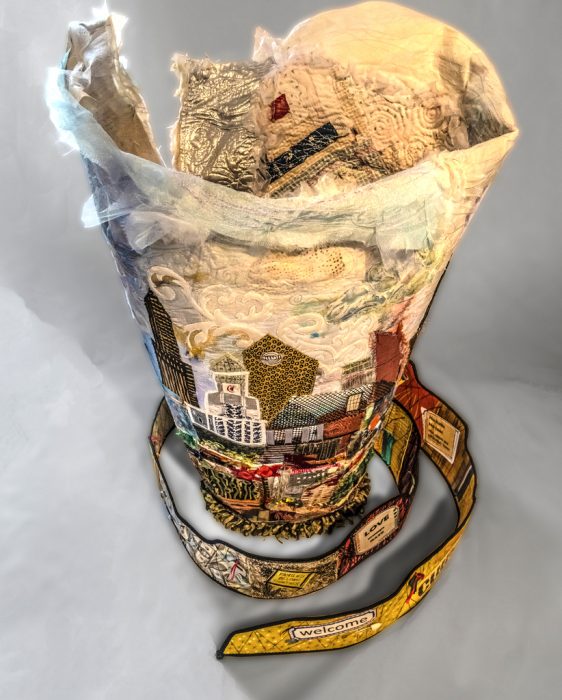
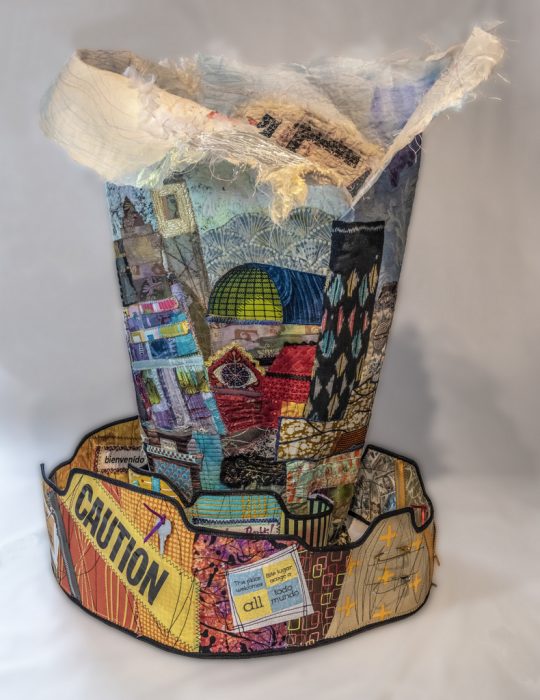
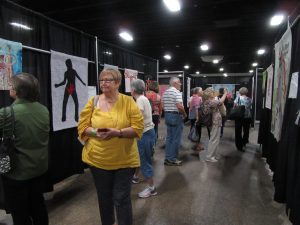
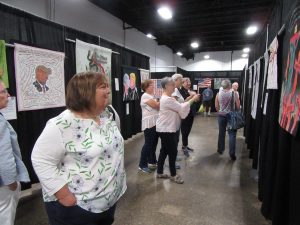 Yesterday, I got to see ToR at the Pennsylvania National Quilt Extravaganza. It was one among many exhibitions and competitions of quilts eliciting oohs and aahs over extraordinarily gorgeous workmanship, composition, brilliance or graphic power. Signs on the ends of the aisles of this exhibit clarified a disclaimer.
Yesterday, I got to see ToR at the Pennsylvania National Quilt Extravaganza. It was one among many exhibitions and competitions of quilts eliciting oohs and aahs over extraordinarily gorgeous workmanship, composition, brilliance or graphic power. Signs on the ends of the aisles of this exhibit clarified a disclaimer.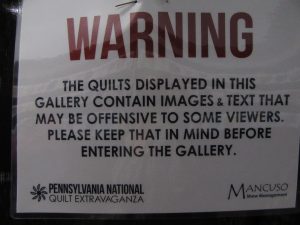
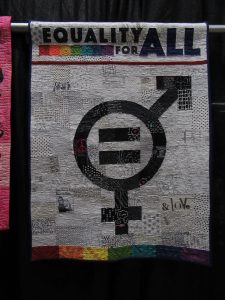
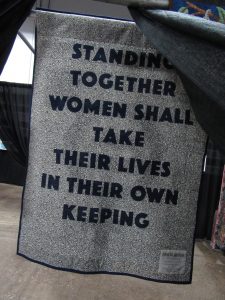
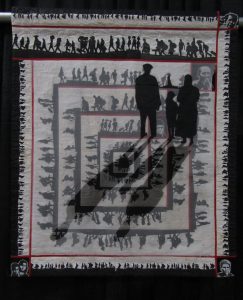
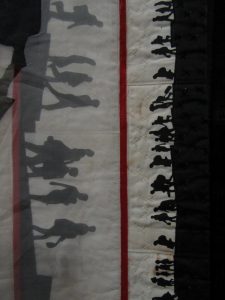
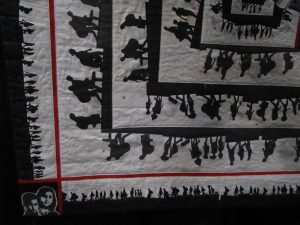
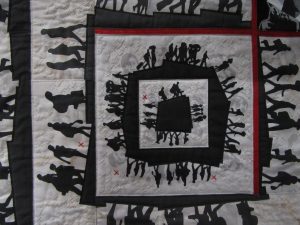
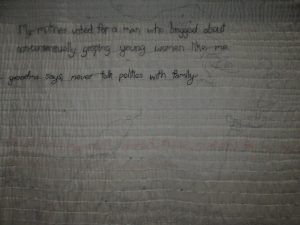
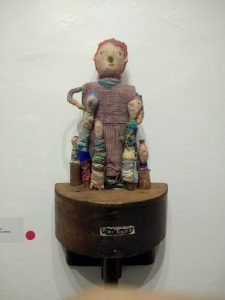 A fascinating exhibit opened this week at the Da Vinci Art Alliance here in Philly, and it i. a collaborative exhibition with Philadelphia Sculptors. Sculpture–or at least 3-D media of any kind was the requirement, addressing the theme of “shelter.” The theme of refugees and immigration resonated with many of the artists, and a number of them used their work to present a shared desire to create a safe haven for people fleeing unsafe environments. Perfectly appropriate for a show in Philadelphia, a sanctuary city with an ongoing battle against Immigration and Customs Enforcers, or ICE.
A fascinating exhibit opened this week at the Da Vinci Art Alliance here in Philly, and it i. a collaborative exhibition with Philadelphia Sculptors. Sculpture–or at least 3-D media of any kind was the requirement, addressing the theme of “shelter.” The theme of refugees and immigration resonated with many of the artists, and a number of them used their work to present a shared desire to create a safe haven for people fleeing unsafe environments. Perfectly appropriate for a show in Philadelphia, a sanctuary city with an ongoing battle against Immigration and Customs Enforcers, or ICE.